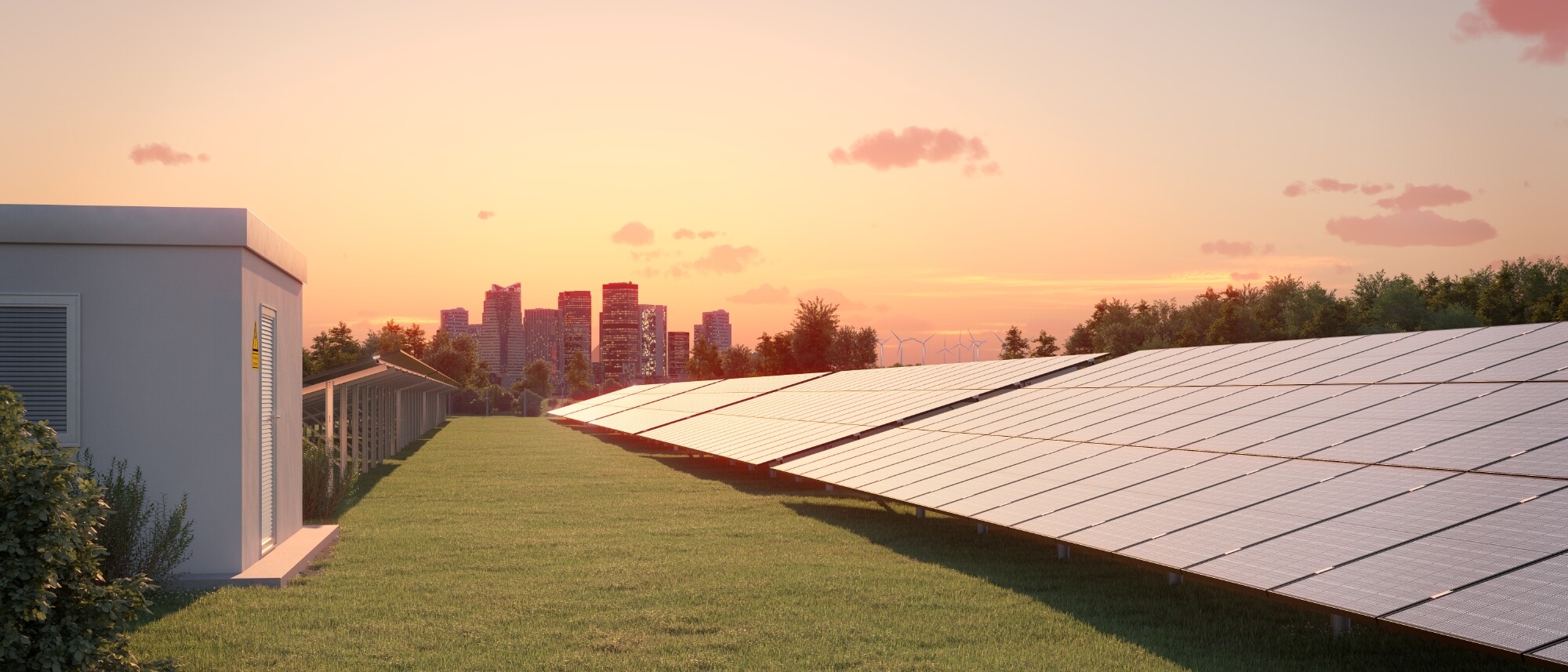Photovoltaics for the energy transition
| by Anika Faber
Whether on the roofs of single-family homes and functional buildings or as parks in open fields: Photovoltaic systems are a central instrument for the development of a sustainable energy supply and are more attractive for producers thanks to new remuneration levels. Since outdoor electrical installations are exposed to stresses such as heat, moisture, storms and UV radiation, FRÄNKISCHE offers a specially coordinated range of protective conduits - for solar modules, inverters and networking in the building.
Renewable energies such as photovoltaics, wind and hydropower play a key role in the energy transition. The Renewable Energy Sources Act (EEG) is intended to promote their expansion. In the current version of 2023, the German government has redefined the target for the share of renewable energies in electricity generation. This is to be increased to at least 80 percent by 2030 - continuously, cost-efficiently and in an environmentally friendly and grid-compatible manner. By then, 115 gigawatts of electricity are to be generated by onshore wind turbines and 215 gigawatts by solar installations. The construction and operation of plants and associated ancillary facilities are in the overriding public interest and serve public safety.
New remuneration rates for electricity fed into the grid from solar installations
In order to promote the expansion of photovoltaics, the level of remuneration for electricity from renewable energies was revised in the EEG Act 2023: Users now have the choice between two rates of remuneration for solar systems that are installed exclusively on, at or in a building. With the “self-consumption” tariff, part of the electricity generated is consumed and the surplus is fed into the grid. The tariff for systems up to and including an installed capacity of 10 kW is 8.6 cents per kWh, and 7.5 cents per kWh for systems with an installed capacity of up to 40 kW.
“Full feeders” feed all the electricity generated into the grid and do not use it for their own consumption. They receive 13.4 cents per kWh for systems up to and including 10 kW installed capacity and 11.3 cents per kWh for systems above this. “Due to the current high electricity prices, it is advisable to consume as much of the solar power generated as possible yourself. Therefore, producers should choose the self-consumption tariff,” explains Norbert Biener, product manager/specialist for standards in the Electrical Systems division at FRÄNKISCHE.
Cable protection tailored to photovoltaic systems
Outdoor electrical installations are exposed to stresses such as heat, moisture, storms and UV radiation. FRÄNKISCHE offers suitable conduits that are designed to meet all requirements for cable protection in outdoor areas: They can be found on the roofs of single-family homes or functional buildings and in photovoltaic parks in open fields.
In ground-mounted systems, the Co-flex PP-UV corrugated conduit protects the connection between the individual solar modules against marten or rodent bites, for example. The slotted pipe is easy to install and can also be retrofitted: users split the pipe, fit the inner pipe with cables and connectors and attach the outer pipe. This permanently closes the slit using the “zipper principle”. The high-temperature-resistant pipe can withstand high mechanical loads and is UV-resistant for 20 years.
Protected above and below ground
The halogen-free corrugated conduit Kabuflex R plus type 450 protects power cables on their way underground, for example from the solar generator to the inverters. The flexible yet stable and highly pressure-resistant electrical conduit is equipped with a smooth inner layer for easy cable insertion. The UV-stable Kabuflex R-UV provides above-ground protection for the power cables. The halogen-free and flexible coiled material is easy to install and has a very high resistance to pressure and impact.
Future-proof and sustainable
Empty conduits in the building So that the electricity from the solar collectors on the roof can continue to be used or stored, empty conduits are required in the building. FRÄNKISCHE conduits are used for networking, intelligent energy management and system monitoring. The FFKu-Smart net corrugated conduit brings the data lines together in a star shape in the communication distributor. Alternatively, the eco-balanced co2ntrol electrical installation conduits can be used, which require up to 60 percent less fossil raw materials in production and save up to 47 percent CO2. The FFKu-Fibre net microduct is the perfect solution for fiber optic installations.
Renewable energy sources mark a decisive step towards an emission-free energy future and are becoming increasingly profitable due to the new remuneration rates for producers. With its electrical installation conduits for photovoltaic systems, FRÄNKISCHE supports the energy transition in Germany and protects cables and lines outdoors, underground and in buildings.


![meta_9ac42098f17c76a1ddf37ef9eb7055b6[en_EN][title] meta_9ac42098f17c76a1ddf37ef9eb7055b6[en_EN][alt]](/assets/images/0/image-portrait-1d9gdtpr1xya1ym.png)